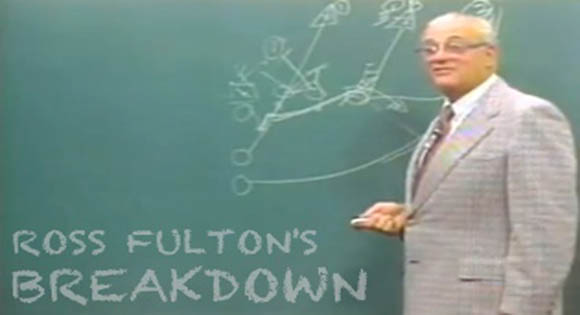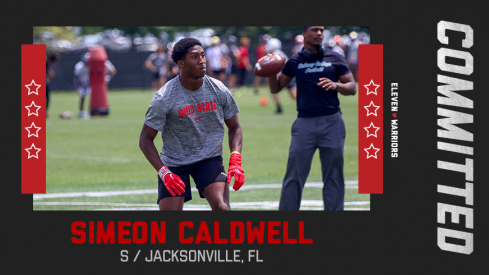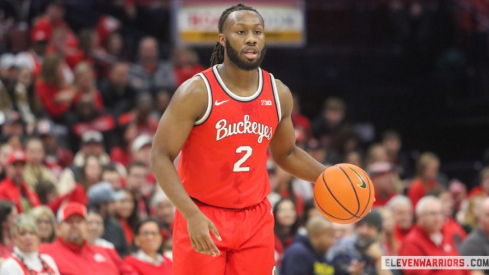Ohio State adds another top-100 safety as Simeon Caldwell commits to the Buckeyes.
This spring, I examined Urban Meyer and Tom Herman's offensive theory, along with the base run and pass offense they installed at Ohio State.
A coach must deal with different personnel every year, however, impacting what plays an offense features. The 2013 Ohio State Buckeyes are no different. It is therefore important to understand what pages from Ohio State's playbook are essential this fall.
Raison D' Etre
No matter what the personnel, Meyer's offense begins with inside zone read. The Buckeyes may run inside zone read as many times in a game as every other play combined. For instance, the Buckeyes often run inside zone read in short-yardage. According to Tom Herman, the defense likely knows the play is coming. But the Buckeye coaching staff believes they will succeed because they practice inside zone so often and their team believes in the play.
With Meyer's offense, inside zone is perhaps a misnomer. The play is run in a downhill, aggressive manner. It resembles a dive play. The offensive line steps play side to combo block the defensive line and linebackers. The goal is vertical movement on the defensive linemen. The running back lines up six yards deep — about a yard behind the quarterback — and aims for the play side leg of the center to hold the front side linebackers.

OSU prefers running inside zone read ‘away’ from a 3 technique, i.e. a defensive tackle that is aligned between the guard and the tackle (see the defender marked as 'T' above). This creates a natural bubble in the backside A gap. The running back looks to bend the play back behind the center.
The most crucial blocks are often those of the backside guard and tackle. Ohio State likes running the play to the right. This allows the running back to bend back left behind Ohio State’s best offensive linemen, left tackle Jack Mewhort and left guard Andrew Norwell.
After he receives the snap, Quarterback Braxton Miller reads the back side defensive end. The read forces the unblocked backside defender to account for the quarterback, preventing an additional defender from attacking the front side zone play. If the defensive end fails to do so, Miller keeps and attacks the backside edge – an event a defense generally seeks to avoid. A defense's focus upon Miller makes it easier to run the base zone play.
We were inverted
Tailback Carlos Hyde is an ideal fit for inside zone. He makes one cut, runs downhill and is generally tackled falling forward. With Hyde, inside zone is the jab for the Ohio State offense.
The Buckeyes were unable to fully exploit other aspects of its offense, however, for lack of appropriate personnel. That was especially true for plays attacking the the defense's edge. At times, Miller was the Buckeyes only outside threat.
Inverted veer/power read – another Meyer staple – is one example. Both names for the play are descriptive. Power read describes the blocking action. The offensive line runs traditional power blocking. The front side down blocks while the backside guard pulls and leads on the front side linebacker. Rather than having a fullback kick out the front side end, however, the offense leaves that defender unblocked. The quarterback instead reads him.

Inverted veer references the backfield action. The quarterback and running back exchange responsibilities from the traditional veer play. The quarterback follows the pulling guard. The running back runs a jet sweep, attacking the edge as quickly as possible.
For the 2012 Buckeyes, inverted veer was a method for Miller to attack north-south. But the play could not be fully utilized because the Buckeyes lacked a back to exploit the jet sweep. This year may be different. Jordan Hall – who Meyer expected to fill that role last year – returns from injury. The Buckeyes also have three ideally suited freshman in Dontre Wilson, Jalin Marshall, and Ezekiel Elliot. One or all could bring this missing element to the Ohio State offense.
Meyer also employs sweeps away from the blocking action to constrain an over aggressive defense. For instance, another play where Wilson may thrive is the touch pass, a simple method to get a player the ball in space. Expect a more regular use of such plays this fall.
Constraint is the Thing
As referenced, the spread's goal is to put a defense in a bind. By using the quarterback as a run threat, the offense forces the defense to account for two potential ball-carriers, while still defending three or more wide receivers. Defenses attempt to cheat this arithmetic. One method is to bring the linebacker covering the slot receiver inside as an additional run defender.
Offenses respond with wide receiver screens. An offense can gain easy yards throwing quickly to an uncovered play maker in space. Ohio State struggled with such screens last year, however. Miller never looked comfortable throwing the pass and the Buckeye receivers were unable to regularly turn short completions into big plays.
But the Buckeyes have players such as Wilson to perhaps exploit yards after the catch this season. One play that will likely be used is the flash screen. The outside receiver steps forward and then comes back inside for the pass. The inside receivers kick out the defensive backs, creating an alley for the receiver to attack.
Flash screen is another method that Meyer and Herman use to get athletes the ball quickly in space.
Triangles
Much of Meyer's passing game gets the football to receivers underneath to gain yards after the catch. Snag is an Ohio State staple that provides the Buckeyes several methods to accomplish this goal. Snag is a triangle stretch. The triangle is created by three wide receivers. Two of the three stretch an area horizontally and two stretch an area vertically.

The outside receiver runs a mini-curl route, the middle receiver a flag route, and the inside receiver breaks to the flat.
Snag is well suited to the Buckeyes' receiving personnel. Philly Brown generally runs the curl route, attacking the mid range area where he is most effective. Devin Smith, the Buckeyes' best deep threat, runs the flag, providing a big-play possibility. And, as discussed, Ohio State has ample slot options to attack underneath.
The Buckeyes also run snag as a sprint out pass, placing more pressure on the defense. Miller attacks the flat defender. If the flat defender hangs back Miller can run, but if the defender comes up Miller can dump over the defender's head for an easy completion. Snag is therefore one of the Buckeyes' most versatile plays.
Ohio State had an effective offense last season despite being somewhat limited. The Buckeyes relied upon a very effective offensive line, a steady Hyde and Brown, and Miller dynamism for big plays. The 2013 Buckeyes return these elements. But they have added pieces that make Ohio State's offense more versatile and can exploit other aspects of Meyer and Herman's playbook.



